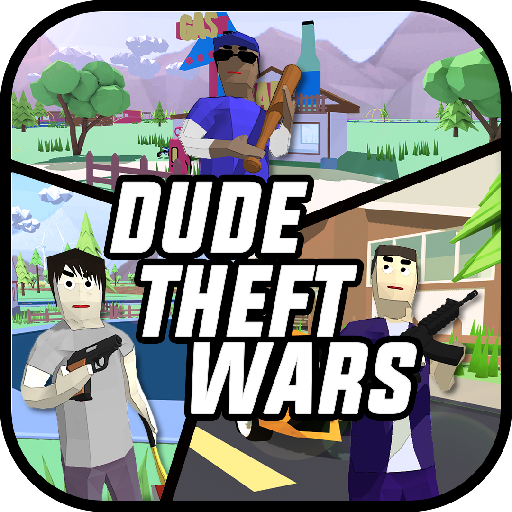The enduring appeal of board games lies in their diverse offerings, catering to families, strategy enthusiasts, and players of all genres. While modern games reach new heights, classic board games retain their charm and popularity among both novices and seasoned players. This article explores some of the best classic board games that have stood the test of time.
TL;DR: Top Classic Board Games
 ### Azul
### Azul
1See it at Amazon ### Pandemic
### Pandemic
0See it at Amazon ### Ticket to Ride
### Ticket to Ride
0See it at Amazon ### Catan
### Catan
0See it at Amazon ### Sherlock Holmes: Consulting Detective
### Sherlock Holmes: Consulting Detective
0See it at Amazon ### Can't Stop
### Can't Stop
0See it at Amazon ### Acquire 60th Anniversary Edition
### Acquire 60th Anniversary Edition
0See it at Amazon ### Diplomacy
### Diplomacy
0See it at Amazon ### Yahtzee
### Yahtzee
0See it at Amazon ### Scrabble
### Scrabble
0See it at Amazon ### Othello
### Othello
0See it at Amazon ### Crokinole
### Crokinole
0See it at Amazon ### Liar's Dice
### Liar's Dice
0See it at Amazon ### Chess - Magnetic Set
### Chess - Magnetic Set
0See it at Amazon ### Playing Cards
### Playing Cards
0See it at Amazon ### Go - Magnetic Board Game Set
### Go - Magnetic Board Game Set
0See it at Amazon
Modern board game design trends, largely emerging from the mid-1990s, have significantly impacted the industry. However, exploring pre-1990s games reveals enduring classics. Presented chronologically (reverse order), here are some of the best:
Azul (2017)
 ### Azul Board Game
### Azul Board Game
1See it at Amazon
Despite its recent release and abstract nature (a genre often challenging to market), Azul exhibits characteristics of a modern classic. Its visually appealing design, featuring vibrant tiles, and straightforward gameplay belie its depth and strategic complexity. The simple act of selecting matching tiles and placing them on your board leads to surprising variety and subtle player interaction.
Pandemic (2008)
 ### Pandemic
### Pandemic
0See it at Amazon
Pandemic's impact on the cooperative game genre is undeniable. While not the first cooperative game, its blend of engaging mechanics and accessible rules propelled it to global popularity. Players collaborate to combat spreading diseases, creating a thrilling race against time.
Ticket to Ride (2004)
 ### Ticket to Ride
### Ticket to Ride
0See it at Amazon
Designed by Alan R. Moon, Ticket to Ride's accessibility stems from its set collection mechanics, reminiscent of Rummy. Players collect colored cards to claim train routes, connecting cities to earn points. The tight map and competitive element create a tense and exciting experience.
Settlers of Catan (1996)
 ### Catan
### Catan
0See it at Amazon
Catan revolutionized the board game landscape with its unique blend of dice mechanics, trading, and route planning. While its popularity has somewhat waned, its historical significance and addictive gameplay remain noteworthy.
Sherlock Holmes: Consulting Detective (1981)
 ### Sherlock Holmes: Consulting Detective
### Sherlock Holmes: Consulting Detective
0See it at Amazon
This innovative game blends board game elements with a whodunnit mystery and choose-your-own-adventure style. Players work together to solve Victorian-era mysteries, immersing themselves in atmospheric storytelling.
Can't Stop (1980)
 ### Can't Stop
### Can't Stop
0See it at Amazon
A more lighthearted game than some others on this list, Can't Stop is a race to reach the top of columns on the board using dice rolls. The tension lies in the decision to continue rolling, risking progress for potentially greater rewards.
Acquire (1964)
 ### Acquire 60th Anniversary Edition
### Acquire 60th Anniversary Edition
0See it at Amazon
Often considered a precursor to modern game design, Acquire stands out for its unique blend of spatial challenges and economic strategy. Players create, merge, and invest in companies, leading to a dynamic and engaging experience.
Diplomacy (1959)
 ### Diplomacy
### Diplomacy
0See it at Amazon
Diplomacy is known for its intense social interaction and strategic depth. Players negotiate and betray each other in a struggle for continental domination, with simultaneous moves adding a layer of uncertainty.
Yahtzee (1956)
 ### Yahtzee
### Yahtzee
0See it at Amazon
Yahtzee's simple dice-rolling and score-tracking mechanics belie its strategic depth. The challenge lies in maximizing scores while managing risk.
Scrabble (1948)
 ### Scrabble
### Scrabble
0See it at Amazon
Scrabble's enduring popularity stems from its combination of vocabulary and spatial reasoning. Players strategically place letter tiles to form words, maximizing point values.
Othello / Reversi (1883)
 ### Othello
### Othello
0See it at Amazon
Othello's simple rules mask a surprisingly deep strategic game. Players strategically place disks to flip their opponent's pieces, leading to dynamic shifts in board control.
Crokinole (1876)
 ### Crokinole
### Crokinole
0See it at Amazon
This dexterity game requires skill and strategy. Players flick disks onto a circular board, aiming for high-scoring zones while considering opponent's placement.
Liar's Dice (1800s)
 ### Liar's Dice
### Liar's Dice
0See it at Amazon
Liar's Dice combines bluffing and probability assessment. Players bid on the value of their hidden dice, creating a tense and engaging social experience.
Chess (16th Century)
 ### Chess - Magnetic Set
### Chess - Magnetic Set
0See it at Amazon
Chess's enduring appeal stems from its strategic depth and complexity. The game's rich history and widespread popularity make it a true classic.
Playing Cards (~900 AD)
 ### Playing Cards
### Playing Cards
0See it at Amazon
Playing cards support countless games, from poker to bridge and beyond. Their versatility and accessibility ensure their continued relevance.
Go (~2200 BC)
 ### Go - Magnetic Board Game Set
### Go - Magnetic Board Game Set
0See it at Amazon
Go's strategic depth and complexity have captivated players for millennia. Its simple rules belie the profound strategic possibilities.
Defining a "Classic" Board Game
Determining what constitutes a "classic" board game is subjective. Factors such as sales figures, influence on game design, and brand recognition all play a role. Games like Ticket to Ride, with high sales, and Acquire, with its innovative design concepts, illustrate different aspects of what makes a game a classic. Brand familiarity, while important, doesn't always guarantee quality. Ultimately, the best classic games offer enduring appeal through engaging gameplay and lasting impact on the board game world.















